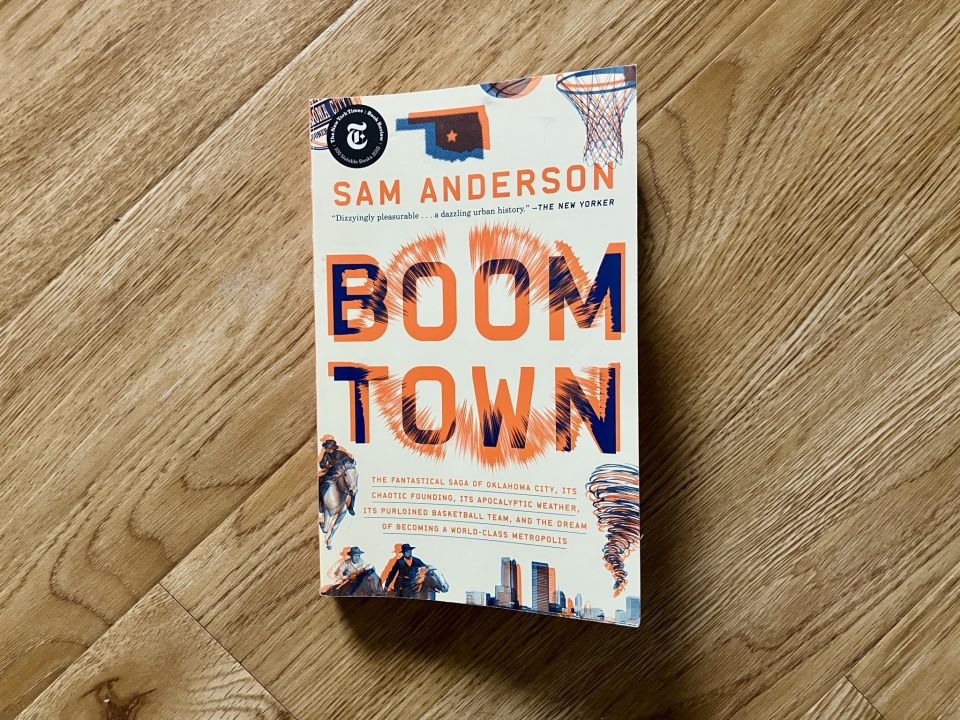Boom Town: The Fantastical Saga of Oklahoma City, Its Chaotic Founding, Its Apocalyptic Weather, Its Purloined Basketball Team, and the Dream of Becoming a World-class Metropolis (2018) →
By Mark Anderson

History. Sports. Civics. Politics. Weather. Terrorism.
Boom Town has it all.
At first glance, this strange mix of topics shouldn’t work together, but somehow, it does. Sam Anderson crafts a fast-paced and engaging narrative of Oklahoma City, weaving together seemingly unrelated threads of the city's history and development into a cohesive and compelling story.
From its attempt to become the test city for daily supersonic jet flights, to the destruction of its urban core in the name of urban renewal, and its collective response to the 1995 Oklahoma City bombing 1, I was surprised by just how deep and rich OKC’s history is— especially considering the city itself was essentially built from nothing. What caught me off guard, not knowing much about the book or its author beforehand, was the emphasis on the founding, development, and cultural integration of the Oklahoma City Thunder NBA team. Anderson uses the Thunder’s story as a recurring thread, tying together the various aspects of the book. Normally, I don’t gravitate toward sports writing, but this worked for me.
This was a highly enjoyable read. In many ways, it reminded me of Smoketown (2018) by Mark Whitaker, which explores Pittsburgh’s history with a particular focus on Black culture.
The concept of place has always intrigued me, and I’m drawn to fresh perspectives on it. While I don’t actively seek out books that dive deep into the history of places I’ve never visited, I often feel compelled to pick them up when I come across them. I’m glad I picked up Boom Town.
-
For most of the book, perhaps 80% of it, the 1995 bombing isn’t mentioned at all. Given how much the narrative jumps between past and present, I started to wonder if Anderson had deliberately left it out, perhaps to avoid casting a shadow over the city's story. How wrong I was. Just as I had that thought, the book shifts gears for a series of chapters that explore the bombing and its lasting impact. Rather than something to be hidden, the event is central to OKC’s identity, serving as a catalyst for civic pride and community resilience.